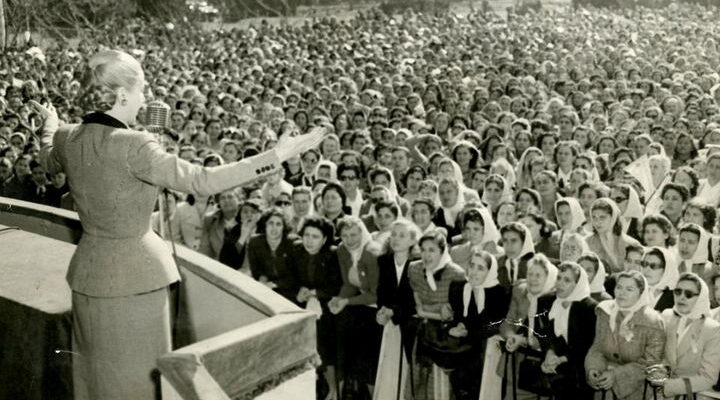Eva Perón, a name that resonates through the annals of history, not just within the confines of Argentina’s borders but across the world. Her life story reads like a script from a dramatic Hollywood movie. From humble beginnings to becoming the First Lady of Argentina, Eva Perón or ‘Evita’ as she was affectionately known, remains an enduring symbol of resilience, empowerment, and controversy. Yet, beyond the glitz and the political rhetoric, lies a tale of a woman who was as complex as she was captivating.
Born into poverty, Evita’s early life was marked by a burning ambition to rise above her circumstances. Moving to Buenos Aires at a tender age, she embarked on a career in acting, laying the foundation for her future role on a much larger stage. It wasn’t long before her path crossed with Juan Perón, a meeting that would alter the course of her life and, indeed, the history of Argentina.
As First Lady, Eva Perón broke the mold. She wasn’t content to play a ceremonial role; instead, she thrust herself into the political arena with fervor. Her efforts to champion the rights of the working class and women transformed her into a beloved figure among the masses, even as it drew the ire of the elite and the military. Her establishment of the Eva Perón Foundation was a testament to her commitment to social welfare, channeling funds and resources to the needy. Here are ten controversial facts about her life and legacy that still capture the public’s imagination.
10 – Humble Beginnings and Ambitious Ascent
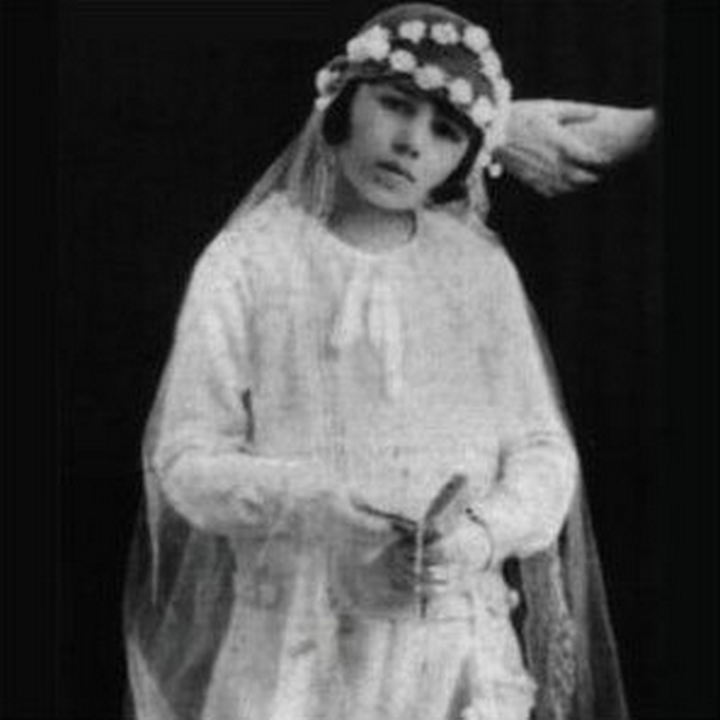
Eva Perón, known affectionately as Evita, didn’t have an easy start. Born into poverty in rural Los Toldos, her journey to Buenos Aires at 15 symbolized not just a physical move but a bold leap towards a new destiny. She left behind a life marked by scarcity, dreaming of stardom in a city that could be both cruel and magnificent. Her early years in Buenos Aires were tough, involving roles in radio dramas and B-grade movies, yet they laid the groundwork for her eventual rise to prominence.
What’s truly remarkable about Evita is how her acting career and sheer determination set the stage for her political ascent. This wasn’t just a tale of rags to riches. It was a narrative of how a woman from the margins of society fought her way into the heart of Argentine politics. Her story resonates with themes of perseverance and ambition, making her a beacon of hope for many Argentinians.
09 – Marriage to Juan Perón
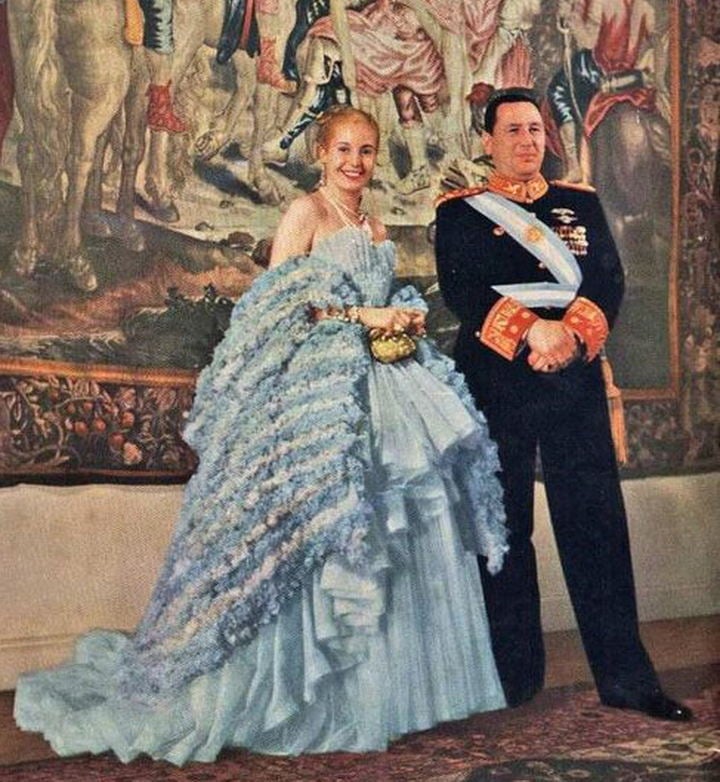
Eva’s marriage to Juan Perón was a turning point. Despite their significant age difference, their partnership was a fusion of love and political savvy. She wasn’t just a spouse; Eva became Juan’s most trusted advisor and a political force in her own right. Her charisma and popularity bolstered Juan’s career, and together, they embarked on a journey that would reshape Argentina.
Eva’s role extended far beyond traditional expectations. She was instrumental in Juan Perón’s political campaigns, appealing directly to the working class and women, sectors previously ignored or marginalized in Argentine politics. This wasn’t just a marriage; it was a dynamic partnership that defied conventions and set new precedents for political engagement.
08 – Active and Unofficial Political Role
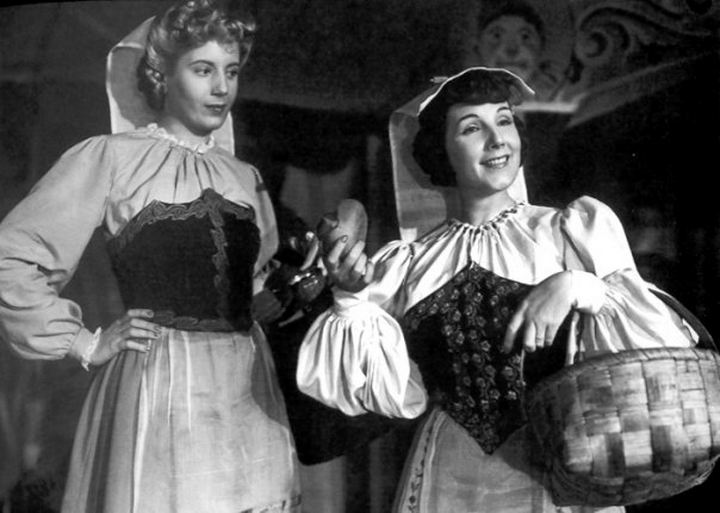
Eva Perón’s political role was both profound and unconventional. Without holding an official government position, she effectively managed the Ministries of Health and Labor, implementing social programs that addressed the needs of the poor and the workers. Her direct engagement with the descamisados, or shirtless ones, showcased her commitment to social justice and her ability to leverage her popularity for political ends.
Eva’s efforts were revolutionary, breaking gender barriers and setting new standards for female political involvement. Her work in these ministries wasn’t just about implementing policies. It was about giving a voice to the voiceless, embodying the hopes and struggles of the common people she aimed to serve.
07 – Controversial Foundation
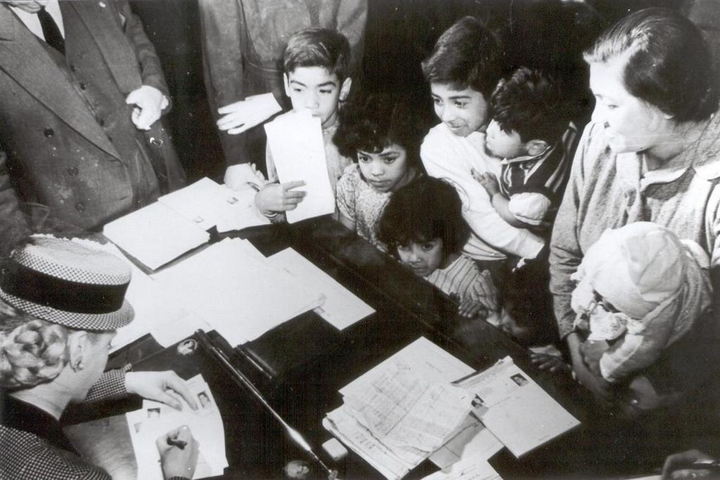
The Eva Perón Foundation was both celebrated and criticized. Its mission was noble: to provide aid to the needy and elevate the living standards of Argentina’s most impoverished. Yet, the foundation’s funding sources were a topic of heated debate. Accusations flew of businesses being pressured to donate, raising questions about the ethics of its operations.
Despite the controversies, the foundation’s impact was undeniable. It spearheaded the construction of hospitals, schools, and housing, creating a tangible legacy of Evita’s commitment to social welfare. The debate around the foundation underscores the complex nature of Evita’s legacy, intertwining humanitarian efforts with political maneuvering.
06 – Evita City
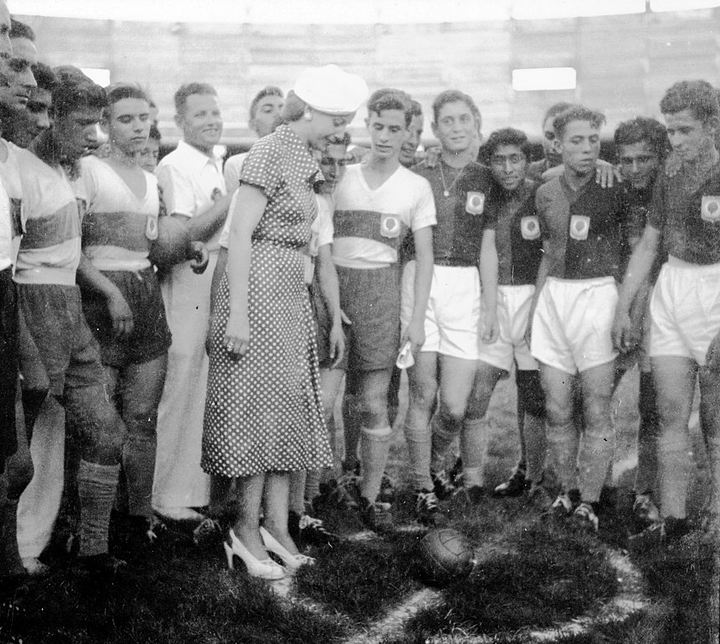
Ciudad Evita, named in honor of Eva Perón, is more than just a suburb; it’s a symbol. Designed in the shape of her profile, this area is a testament to her lasting impact on Argentina. The city’s creation under the auspices of the Eva Perón Foundation was meant to provide affordable housing for working-class Argentinians, embodying her dedication to social welfare.
Over the years, Ciudad Evita has faced its challenges, including name changes and political controversies. Yet, its existence continues to remind Argentinians and the world of Eva Perón’s unique legacy. The story of Ciudad Evita is not just about urban planning. It’s about how Eva’s vision for a fairer society was imprinted not just in policies and speeches but in the very landscape of Argentina.
05 – Rainbow Tour and International Relations
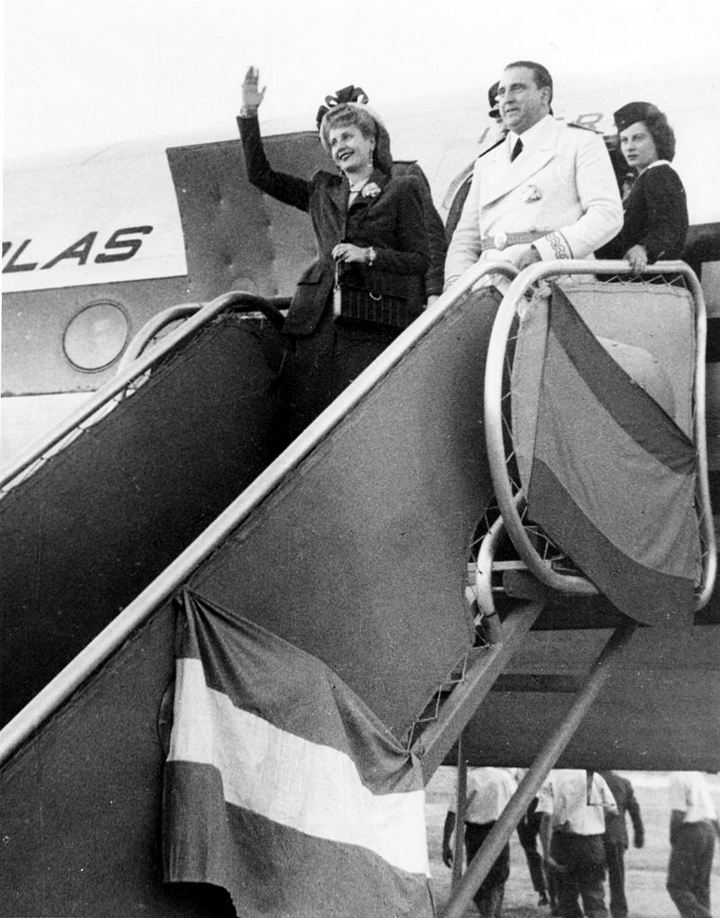
Eva Perón’s 1947 European tour, known as the Rainbow Tour, was a dazzling yet divisive venture into international diplomacy. It was an ambitious attempt to bolster Argentina’s image on the world stage, with Evita herself leading the charm offensive. Her visits to Spain, Italy, France, and Switzerland were met with both adulation and skepticism, showcasing the polarizing nature of her and Juan Perón’s political ideologies abroad. The tour not only aimed to secure Argentina’s post-war position but also to reshape the Peróns’ global image, intertwining political strategy with Evita’s star power.
However, the reception was mixed. While she was warmly welcomed in Spain and Italy, her presence stirred controversy and even protests in Switzerland, reflecting the complex web of post-war politics and perceptions of Peronism. Despite these challenges, Evita’s international tour marked a significant moment in Argentine diplomacy, highlighting her role as a pioneering figure in the country’s political and social history. It underscored her ability to navigate the intricate dynamics of international relations, leaving a lasting impact on how the Peróns were viewed around the world.
04 – Championing Women’s Rights
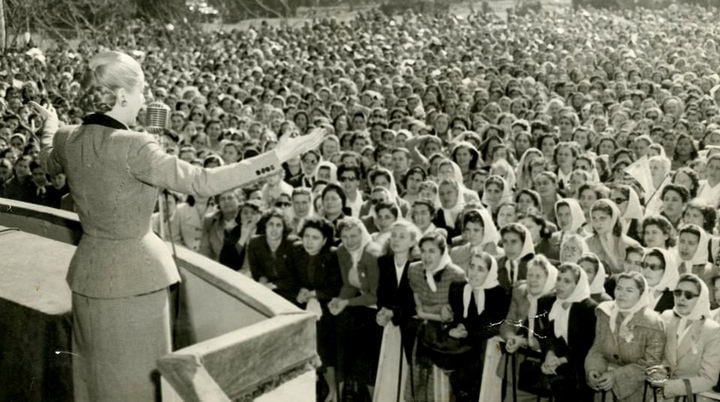
Eva Perón’s commitment to women’s rights was a cornerstone of her legacy. She was a driving force behind the movement for women’s suffrage in Argentina, which culminated in the enactment of the law allowing women to vote in 1947. This achievement was not just a legislative victory. It was a transformative moment for Argentine society, empowering women and amplifying their voices in the political arena. Evita’s advocacy went beyond suffrage; she founded the Female Perónist Party. It was the first large-scale female political party in the nation. Female Perónist Party played a crucial role in mobilizing women and integrating them into the political process.
Her efforts in championing women’s rights reflected a broader commitment to social justice and equality, embodying her vision of a more inclusive society. Through speeches, radio addresses, and her undeniable influence in the corridors of power, Evita worked tirelessly to break down barriers and challenge the status quo. Her legacy in the realm of women’s rights remains a testament to her pioneering spirit and her unwavering dedication to advancing the cause of women in Argentina and beyond.
03 – Health Struggles and Untimely Death
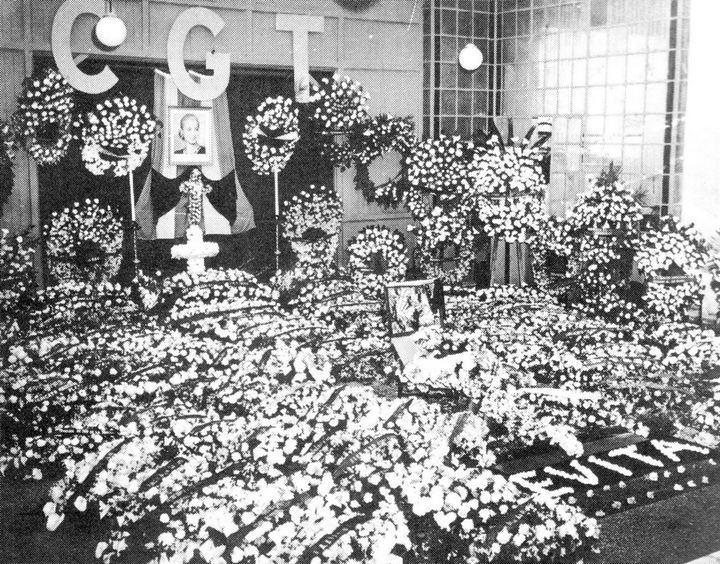
Eva Perón’s life was a beacon of hope for many, but it was also marked by profound health struggles. In 1951, she was diagnosed with cervical cancer, a revelation that began a series of events leading to her untimely death at the age of 33. Her battle with the illness was kept largely out of the public eye, with her condition worsening despite various treatments. In a desperate attempt to alleviate her pain and perhaps alter her deteriorating condition, a secret lobotomy was performed, a fact that remained hidden for decades.
The nation mourned her death in July 1952, a testament to the deep connection she had forged with the Argentine people. The public mourning was intense, with thousands lining the streets to pay their respects to their beloved Evita. Her death did not mark the end but the beginning of a legacy that would endure through the ages, cementing her status as a symbol of compassion and resilience in the face of adversity.
02 – Posthumous Legacy and Missing Corpse Saga
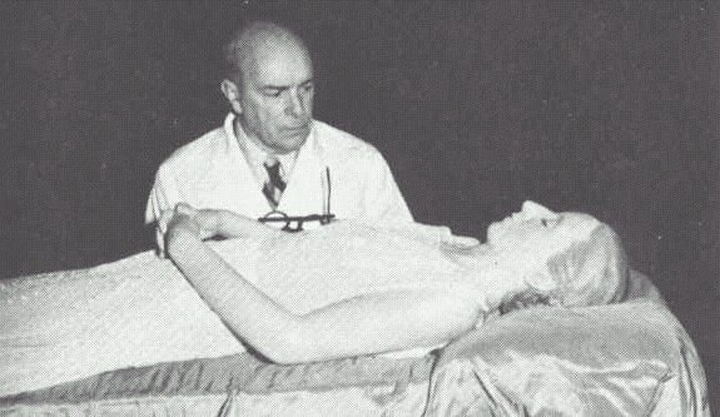
After her death, the saga of Eva Perón’s embalmed body became a story of almost mythical proportions. Initially intended to be displayed in a monument, her body disappeared for 16 years following the military coup that overthrew Juan Perón. The odyssey of her remains, from being hidden by the military to its discovery in Milan and finally its return to Argentina, reads like a thriller, encapsulating the turbulent political climate of the time.
Her eventual resting place in La Recoleta Cemetery in Buenos Aires offered a semblance of closure, but the journey of her body highlighted the enduring impact of her legacy. Even in death, Evita remained a potent symbol of both division and unity, reflecting the deep emotions and complex history she represents for Argentina and the world.
01 – Cultural and Political Icon
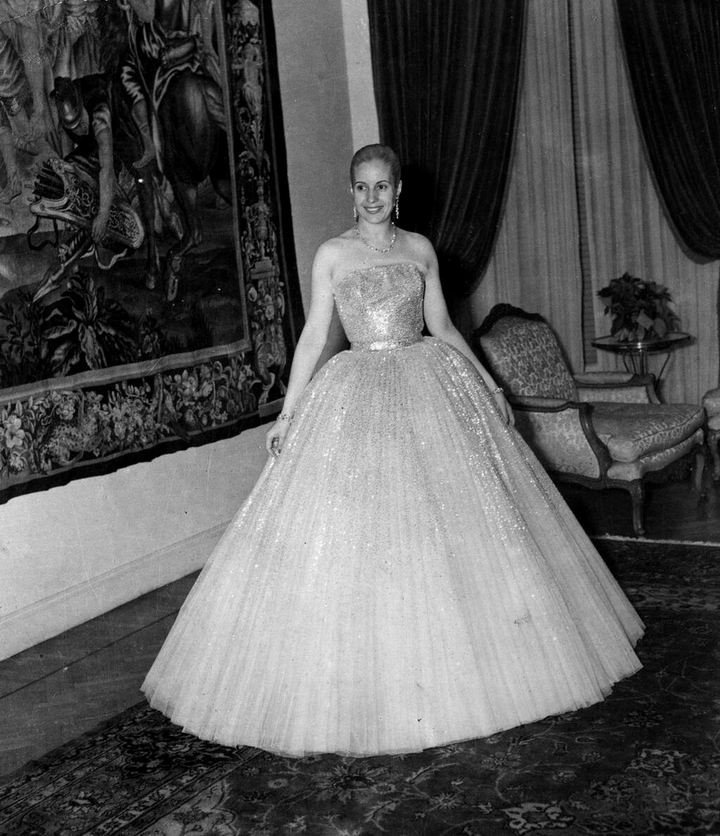
Eva Perón’s influence extends far beyond her lifetime, with her life story captivating the imagination of people around the globe. She has been immortalized in books, films, and musicals, most famously in “Evita,” which introduced her fascinating story to a new generation. Her image graces stamps, currency, and memorials, a testament to her lasting presence in Argentine culture and politics.
Yet, it’s not just her accomplishments or the controversies that surround her that make Evita a cultural and political icon; it’s her indomitable spirit. Her life embodies the struggle for justice, the power of compassion, and the enduring strength of conviction. Eva Perón remains a figure of inspiration, a woman who rose from humble beginnings to leave an indelible mark on her country and theworld. Her story is one of resilience, passion, and an unyielding commitment to her ideals and the people she sought to uplift. As a cultural and political icon, Eva Perón continues to inspire discussions about leadership, social justice, and the role of women in shaping history. Through various portrayals and commemorations, Evita remains an enduring symbol of the complexities and challenges of political and social reform, reflecting the timeless quest for dignity and equality for all.
Eva Perón: A Fashion Icon and Symbol of Elegance
Eva Perón, affectionately known as Evita, was not only a political and social figure but also an undeniable fashion icon whose style continues to inspire. Her influence extended beyond the political arena, entering the realms of culture and fashion, where she left an indelible mark with her impeccable taste and elegant attire.
The Essence of Evita’s Style
- Sophistication and Elegance: Evita’s wardrobe was a reflection of her sophisticated taste, often seen in tailored suits, luxurious gowns, and designer dresses. Her choice of attire communicated power, grace, and a keen eye for fashion, making her a style icon of her time.
- Iconic Accessories: Beyond her clothing, Evita was famous for her use of striking accessories. Pearls, fur stoles, and elaborate hats became synonymous with her look, each adding a layer of glamour and complexity to her public image.
- Fashion as a Statement: For Evita, fashion was not just about personal style; it was a tool for communication. Through her wardrobe, she conveyed messages of strength, femininity, and approachability, bridging the gap between her political stature and the public.
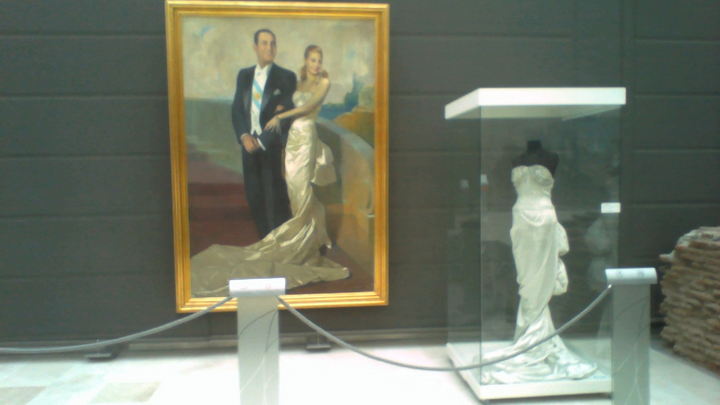
Evita’s Influence on Fashion and Culture
Eva Perón’s fashion sense did more than just set trends. It became a powerful part of her legacy, influencing designers and fashion enthusiasts worldwide. Her ability to blend elegance with political savvy set her apart as a figure whose style transcended the boundaries of time and politics.
- Legacy in Modern Fashion: Today, Evita’s influence can be seen in collections and designs that echo her iconic style. Designers often draw inspiration from her bold yet elegant look, merging vintage allure with contemporary fashion.
- Museums and Exhibitions: The Evita Museum in Buenos Aires is a testament to her impact, showcasing her dresses, suits, and accessories. These exhibitions provide insight into her personal style and its significance in Argentine history and culture.
Eva Perón remains a symbol of timeless elegance and fashion-forward thinking. Her legacy in the fashion world is a reminder of how style can embody power, personality, and political influence. As a fashion icon, Evita continues to inspire with her story of grace under pressure, proving that true style is eternal.
In conclusion, Eva Perón’s contribution to fashion is as significant as her social and political endeavors. Her timeless elegance and sophisticated style continue to inspire fashion enthusiasts and designers, making her a perpetual figure of admiration in the world of fashion and beyond.


